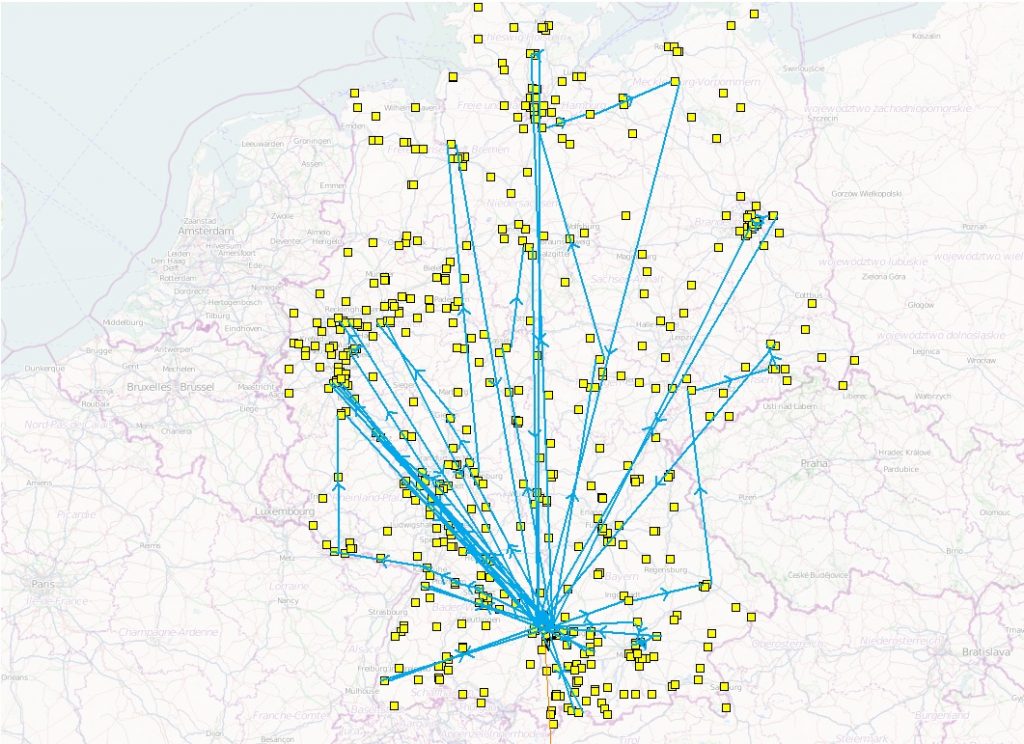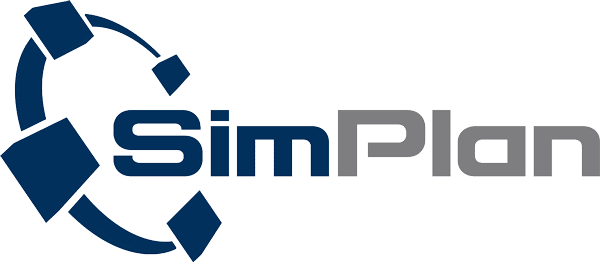
Simulation of a supply chain network
Transparency in SCM (Supply Chain Management)
Some experts estimate that around 80% of the costs in SCM are influenced by the geographical positioning of suppliers, production sites, and warehouses, as well as the optimal flow of materials between these locations.
However, existing supply chains in sectors like automotive or mechanical engineering often reflect a historically evolved supply structure. These SCM networks are characterized by complex dynamic relationships that stem from a high number of suppliers, diverse delivery behaviors (such as order cycles, quantities, delivery times), and the extensive supply network including transport routes and warehouses. Additionally, the ordering behavior of the end customer—detailing product characteristics, quantity, and timing—plays a significant role.
The optimization of these supply chain networks typically focuses on specific elements, like transport costs or delivery times within individual segments of the supply chain. However, the impact of changes on other parts of the SCM often only becomes evident long after implementation, necessitating costly subsequent modifications.
It is thus essential to foster transparency in supply chain management, focusing on all dynamic relationships to facilitate a comprehensive assessment and optimization of the entire supply chain. This approach ensures that SCM strategies effectively align with overall business objectives, enhancing efficiency and reducing costs.
Tools create clarity
The software applications of the SimChain toolset enable SimPlan to create a digital twin of a supply chain in the computer, with which a well-founded investigation of concrete measures and the evaluation of their effects is possible.
In addition to the analysis of structural bottlenecks, the behavior can also be examined under consideration of dynamic influencing variables (disturbances, fluctuating capacities, flexible retrieval behavior, etc.). Alternatives can be compared and evaluated in detail.
The evaluation of simulation results is very closely oriented to the key figures valid for the supply chain, such as delivery time, delivery reliability, change flexibility and, of course, costs. The structure of a corresponding key figure system in the simulation model can be oriented to the real system or even designed and tested with the help of the simulation.
The SimChain toolset consists of the following software applications:
- anyLogistix, software from AnyLogic Company for the design and simulation of supply chains;
- SimChain library, a self-developed module library based on Plant Simulation for the design and simulation of supply chains.
- Supply Chain Suite (SCS): Your ERP system expanded to include comprehensive supply chain management
- KNIME, an ETL software (ETL: Extraction, Transformation, Loading) for the analysis and transformation of supply chain data into a readable format for optimization or simulation;
- A Python working environment, if complex data analyses and transformations are to be carried out that cannot be represented with the ETL software.
Your benefit
The service offered by SimPlan has the advantage that the customer requires no software or simulation skills whatsoever. The scope of the SimPlan service extends from analysis of the supply chain through documentation of the process and development of the key figure system to generation of the simulation model and conduct of experiments.
The result of the analysis is a quantitative evaluation of improvement measures for the supply chain, whose economic efficiency is defined for example in the form of business cases, as well as a concrete recommendation for implementation. On request SimPlan will also support the customer during the implementation phase.
